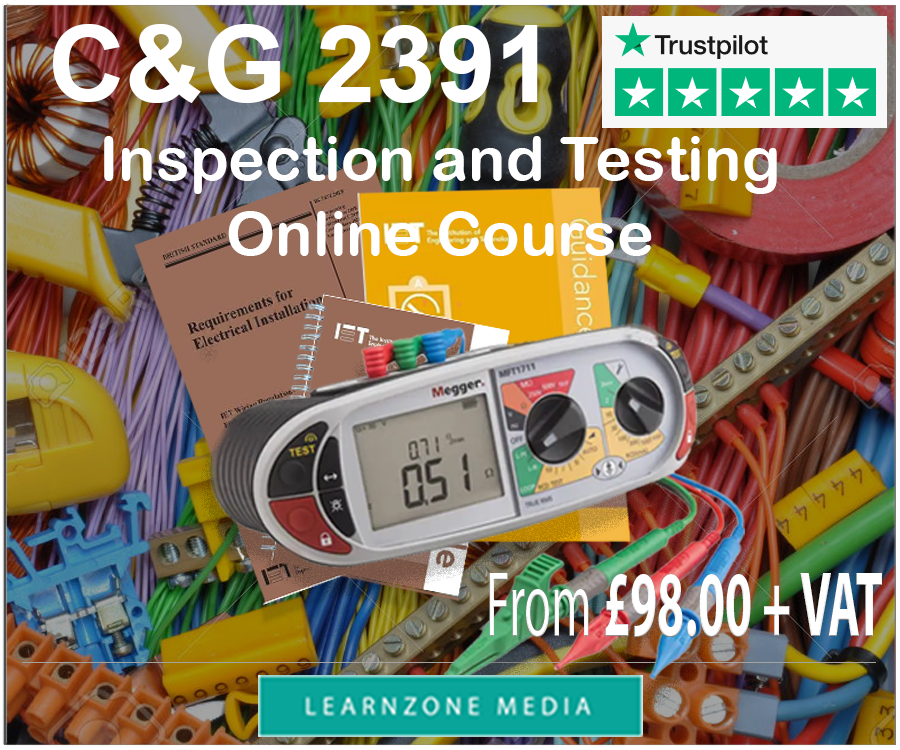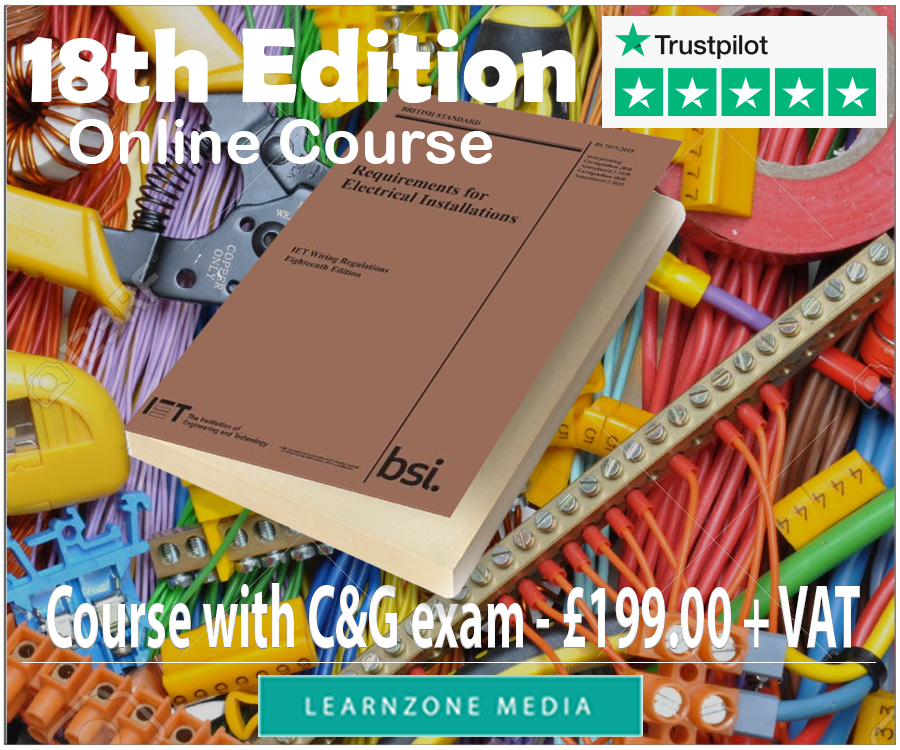C&G 2365 - 203 Electrical Installations Technology Practice Questions with Answers
Practicing with these questions and answers will help you prepare for the C&G 2365 unit 203 exam.
1. The earthing conductor, on the supply side of a TT system must be connected:
a) Through an impedance, then earth
b) To the Neutral
c) To an Earth Electrode
d) To the transformer or generator only
2. What does the abbreviation MET stand for:
a) Main Earth Tails
b) Meter Earth Termination
c) Main Equipotential Terminal
d) Main Earthing Terminal
3. Part 1 of BS7671 refers to:
a) Special installations or location
b) Selection and erection of equipment
c) Scope
d) Protection for safety
4. The clamp used for main equipotential bonding conductors to water pipes must meet:
a) BS951
b) BS7671
c) BS8888
d) BS88
5. Which of these is no longer used for new installations:
a) RCCB
b) RCBO
c) RCD
d) ELCB
6. Which of these will increase the resistivity of an installed cable:
a) Shortening the length
b) Reducing the temperature
c) Changing the cable from Aluminium to Copper
d) Reducing the cross-sectional area
7. Which of the following luminaires has the highest efficacy:
a) Low pressure sodium
b) Fluorescent
c) Tungsten
d) High pressure sodium
8. BS 7671:2008, 17th edition, Part 6 covers what:
a) Special Installations or Locations
b) Inspection and Testing
c) Definitions
d) Selection and Erection of Equipment
9. The main purpose of equipotential bonding is to:
a) Maintain metal parts in one area at the same potential
b) Avoid damage to equipment
c) Increase the impedance of the earth return path
d) Increase the earth loop impedance
10. What is the main reason that cable numbers are limited (following BS7671) in trunking:
a) To allow for further circuits to be fitted later
b) So they can be arranged neatly
c) To allow space so that the heating effect of the cables does not lead to large volt drops
d) To reduce electromagnetic induction between cables
11. Under the ESQCR 2002, which type of supply system has been specifically prohibited for new installations:
a) TNC-S
b) IT
c) TT
d) TN-C
12. Why are RCD's installed in domestic premises supplied by a TT system:
a) It‟s the law
b) The Earth return path could have a very low impedance
c) The Earth return path could have a high impedance
d) The ESQCR states that it must
13. Which of these is a common way of protecting against indirect contact
a) EEBADS
b) Cable insulation
c) Metal enclosures
d) By placing out of reach
14. How do you correctly check that an electrical system is correctly isolated:
a) Use an approved voltage indicator
b) Plug something into the circuit to see if it works
c) Touch a bare wire or connector with the back of your hand
d) Use a home-made "bell‟ tester
15. In relation to fuses, what does HRC stand for:
a) High Resistive Current
b) Heavy Rupturing Current
c) Heavy Resistive Current
d) High Rupturing Capacity





